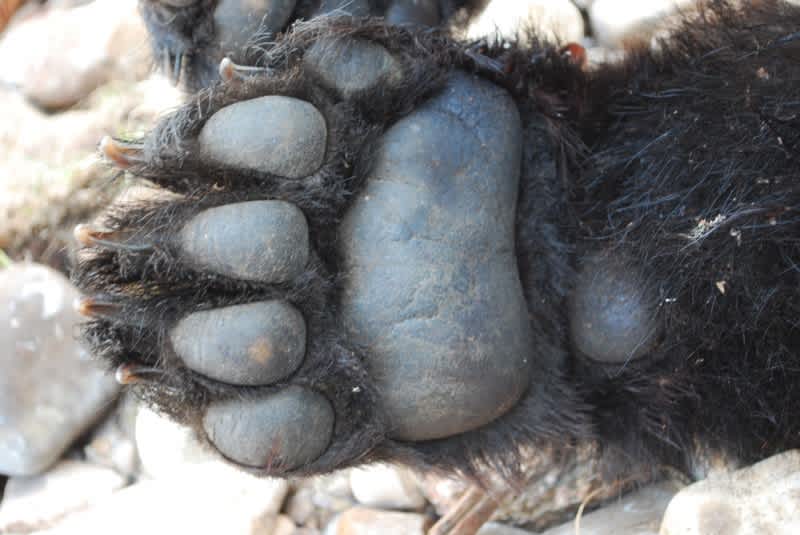How to Hunt Black Bear
OutdoorHub 05.23.11

Although most of us who have seen black bears running away from us in the woods don’t consider them that dangerous, the fact is that they have killed people and are obviously more unpredictable than a deer or elk. They are unpredictable after being shot, especially non-mortally wounded bears, so the utmost caution is required when tracking. Shot placement is critical, and even a killshot may not bleed as much as expected so be sure to put in your preseason rifle or archery practice.
Here are some key black bear hunting tips to remember:
- The major thing the black bear does have in common with other big game is its keen sense of smell. Similar to coyotes, they will often circle a bait to approach from downwind. And just like a deer, if they catch the slightest trace of cologne, toothpaste, shampoo or your wife’s favorite fabric softener, they’ll be gone in a flash.
- Although their eyes aren’t great, black bears are good at detecting movement, so you’ll want to make certain a bear has its head completely turned when drawing your bow or shouldering your rifle.
- Never shoot a single bear immediately when it walks into a baited area, because it may be sow with a couple of cubs lollygagging a few minutes behind.
- Which gun is the best for black bear hunting? Most guides say the smallest anyone should go is .30-06, and most seem to favor calibers including .300 mag, .338 mag, and .375 mag.
- How do I tell a male black bear from a female? An adult male usually has a larger, rounder body as well as a roundish head, whereas a female has a more narrow body and face. If you get a chance to observe the bear urinate, you’ll notice that the female might squat, while the male will not.
Black Bear Hunting Methods
There are basically four methods of black bear hunting, two of which are most commonly used; baiting and hounds. The ethics of these two methods have been fiercely debated in some states, especially on the east coast but all things considered, both techniques are effective. Using dogs for bears isn’t much different from using them for hunting mountain lions or even raccoons. The general objective is to get the animal into a tree, where a clean, humane shot may be taken at close range.
When baiting for bears, either in the fall or spring, the setup is very similar to a deer hunting situation. Tree stands are a must, and baiting should begin several weeks prior to opening day. Bait can include anything stinky, from rotting meat to pastry treats like doughnuts drizzled with maple syrup. It’s also good to present your bait in a way that requires the bear to stick around for a while and not just grab a mouthful and split. This can be done by building a natural, “log cabin” style food cache that the bear must pull apart to get at the prize. Another popular method is the 55-gallon drum, which serves the double purpose of holding the bait, while giving the hunter a good way to judge the size and weight of the bear. This is particularly important for the inexperienced hunter who has not seen many bears in the wild. When multiple bears come in it’s easy to judge size (at least, relative to the others present) but when a single bear comes to the bait a neophyte might think he’s looking at a monster, when in reality it’s just an 80-pound cub.
The other two methods of black bear hunting include the “chance encounter,” method and “spot and stalk.” When you kill a black bear in a chance encounter, it’s because you are hunting for something else like deer or elk, and you happen to have a bear tag in your pocket. This was the primary way in which black bears were killed long before there was even such thing as bear season. The fact that a hunter cannot always be selective regarding a bears sex or age in this situation makes the chance encounter kill a questionable move in the conservation playbook.
The spot and stalk method is not the same as with mule deer, and should actually be called “drift and stalk.” Popular in Alaska, the boat method allows hunters and spotters to cover huge amounts of terrain quickly, then move toward shore in silence after spotting a desirable bear. Once the wind direction is determined the boat is beached several hundred yards up or downstream, and the stalk is on . . . Similar to baiting, which offers the patient hunter a choice of bears, the drift and stalk method gives one more animals to choose from and in doing so allows him or her to make the best choice according to the options allowed by state biologists.
Always make sure you’re aware of all hunting seasons going on while you’re bear hunting. You never know if a turkey hunter clad in full camo is stuffed in a nearby bush, waiting to let out a hideous screech on a piece of slate . . . Those guys are crazy.
Try these bear hunting tips for the next time you pursue black bear, and good luck!

